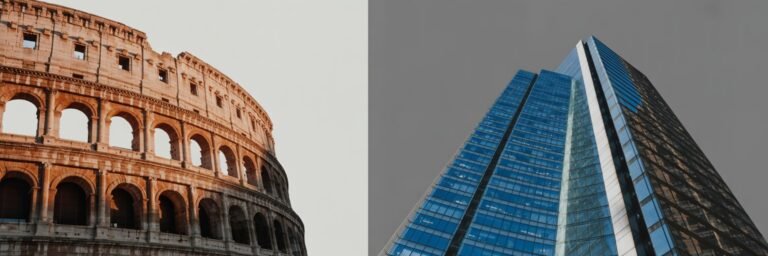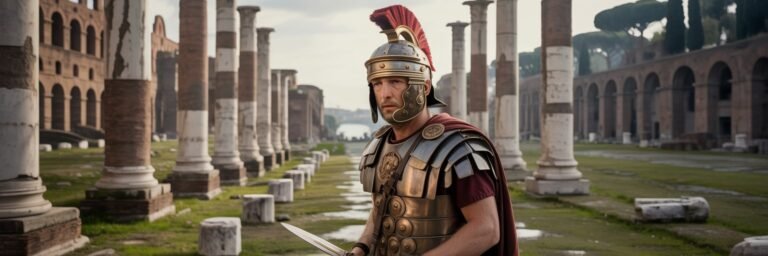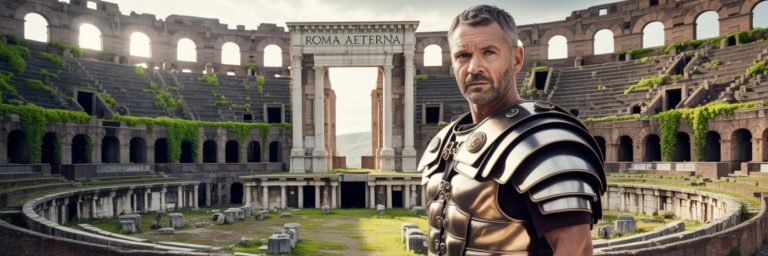INTRODUCTION
To delve into the annals of history and punctuate the kaleidoscope of events that unfolded during the Roman Empire is like taking an immersive voyage into the labyrinth of time itself. From around 27 B.C. to A.D. 476, the empire reshaped the very fabric of history, fascinating historians, academics, and lay readers alike. Through centuries of its robust existence, Rome emerged as the epicenter of art, law, warfare, politics, and faith, leaving indelible fingerprints across Europe’s cultural and social landscape. This navigational tour through the highs and lows of the Roman Empire brings to life the echo of a bygone era and unravels the mysteries buried in its chronicles.
HISTORICAL BACKGROUND
At the heart of the Roman Empire’s unparalleled grandeur was its ability to adapt, survive, and advance, unfurling a cultural tapestry that radiated beyond geographical confines or European frontiers. The Roman Empire took root as a transformable entity during the reign of Augustus, who, after toppling Marc Antony in 31 B.C., erected a regime veiled under the illusion of republicanism. This artificial representation of the republic continued to reign till 192 AD, termed as the Pax Romana (Roman Peace), a period marked by relative political stability, cultural and intellectual prosperity, and restless expansion.
The most glorious chapters of Roman history were those characterized by its architectural prowess, progress in law and administration, evocative literature, military might, and unprecedented leaps in engineering and civic milestones. Yet, the sheer breadth of the Roman Empire led to its inevitable bureaucratic and military overstretch, leading to its eventual downfall in the mid-5th century AD.
THEORIES AND INTERPRETATIONS
Theories and interpretations surrounding the Roman Empire have been as diverse as the Empire itself. The most enduring interpretation—and perhaps the most mainstream—casts the empire as a beacon of civilization that created the blueprint for Western society’s administrative, legal, and cultural structures. Edward Gibbon, a seminal British historian, famously discussed the Empire’s decline and fall in his work, attributing it to the degradation of military ethics, the gradual weakening under barbarian invasions, and the influence of Christianity.
Yet, there are alternate interpretations. Michael Rostovtzeff, another prominent scholar, argued that the fall of the Empire was a result of an economic crisis spurred by the clash of the aristocracy and the proletariat. Another school of thought proposes that Rome never really fell but underwent continuous metamorphosis, transitioning to a Byzantine style of rule that persisted for centuries.
MYSTERIES AND CONTROVERSIES
Several under-explored facets and deviations from mainstream narratives add zest to the Roman Empire’s tale. For instance, the Third Century Crisis—an era marked by political instability, usurpation, economic collapse—is a lesser-known chapter that almost led to the Empire’s premature disintegration.
Moreover, the controversy surrounding Christianity’s role in the Empire’s downfall has sparked extensive debate among scholars. While some view the adoption of Christianity as the state religion as a decline in Roman martial spirit, others view it as an instrument of unification and a new dawn.
SYMBOLISM AND CULTURAL SIGNIFICANCE
Rome’s vast empire was not just about territorial conquests or political dominance. It was a remarkable crucible of cultural metamorphosis. Latin language, Roman law, architectural grandeur, religious influences, gladiatorial contests all symbolized the very essence of Rome and its cultural significance.
Roman symbols such as the eagle, the fasces, and the laurel wreath represented Rome’s military might, the power of unity, and victory respectively while serving as potent emblems of authority and rule. Moreover, the adoption of Greek gods and their syncretism with Roman counterparts shaped the religious landscape of the Empire, whose influence lasts till date.
MODERN INVESTIGATIONS
Modern research has applied numerous innovative approaches to unearth the Roman Empire’s rich narrative. Archaeological breakthroughs, especially in Rome, Pompeii, and Herculaneum, have furnished priceless insights into Roman life and civilization.
Even as historians like Bryan Ward-Perkins refute the concept of a ‘peaceful transition’ from Rome to Middle Ages, suggesting instead a violent and detrimental break, they provide insights that reshape our understanding of Rome’s decline. Interestingly, studies in environmental determinism have suggested that Rome’s demise was a result of climate change and plague outbreaks, offering another layer of depth to the existing narratives.
LEGACY AND CONCLUSION
The Roman Empire’s legacy reverberates to this day, influencing the manner in which Western societies govern themselves and understand the world. The architecture the Romans left behind, the law system they developed, and the Latin language that fueled Roman bureaucratic and intellectual machinery remain interwoven with modern life, forming a timeless bond.
In conclusion, the Roman Empire’s narrative is a complex interplay of power, wisdom, creativity, decadence, resilience, and tragedy that nudges us to study ourselves through the prism of the past. It serves as a mirror to the greatness and fallibility of human civilization, prodding us to tread the corridors of history with humble awe and profound respect. As we cartograph this rich mosaic of history, it’s evident we are the inheritors of its legacy, living out the Roman Empire’s echo in our contemporary life.






